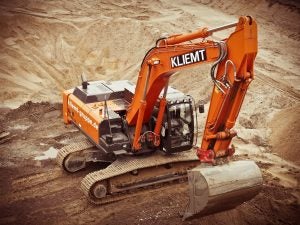Pipeline damage prevention: A win-win for safety and the environment
 By Mishal Thadani, Director of Market Development and Policy, Urbint
By Mishal Thadani, Director of Market Development and Policy, Urbint
Every year in the United States, 400,000 excavation projects damage underground infrastructure like water and gas pipes and electric and cable lines. A strategic mix of best practices, good policy and artificial intelligence will drive that number down.
One of the advantages of burying critical infrastructure underground is that it keeps it safely away from people, cars and other things that could cause damage. Though unaffected by most day-to-day human activity, its concealment renders it highly susceptible to excavation damage like road work and construction. Not only can the damage be expensive and inconvenient, it can create safety and environmental threats for local communities.
The Pipeline and Hazardous Materials Safety Administration estimates that excavation damage caused more than 800,000 leaks on distribution pipes over the last 10 years. For natural gas pipes in particular, reducing damage is an opportunity to improve local safety while simultaneously decreasing the emission of methane, a potent greenhouse gas.
Industry best practices
Safe excavation starts with a phone call to your state’s 811 call center. Whether you’re digging a hole in your own yard or the city is building new roads, this simple step can’t be overemphasized. That’s why utilities all over the country promoted National Safe Digging Day on August 11th (811 day) to remind everyone to “call before you dig” so operators can mark underground assets to avoid an accident.
Pipeline damage prevention: A win-win for safety and the environment Share on XNationally, instances of excavation damage where 811 was not called occur every six minutes. If we can increase awareness about this simple first step, the number of infrastructure accidents will be significantly reduced. For decades the Common Ground Alliance has convened representatives from 16 types of underground asset owners to do just that. CGA’s efforts to educate excavators and improve industry practices have led to a remarkable 29% decline in gas pipeline damage rates since 2008.
Connecting the methane molecules with policy
Regulators are recognizing pipeline damages as a significant source of methane emissions. The EPA’s Natural Gas STAR Program, a voluntary methane emission reduction program that showcases various techniques to lower methane emissions, includes damage prevention techniques as one of its commitment types. Twenty-three of the largest gas companies have used the damage prevention commitment pathway since 2016 to voluntarily reduce methane emissions.
States are taking action, too. In 2014, California passed SB 1371, which requires gas utilities to use 26 of their own developed best practices for methane leak abatement, three of which are designed to reduce pipeline dig-ins. The California Public Utilities Commission has also approved a methodology to calculate emissions as a result of third-party pipeline damage. In Massachusetts, the Department of Public Utilities is currently undergoing a rulemaking to create a registry for lost and unaccounted for gas. Attributing emissions to excavation damage is one of the top priorities.
Looking to AI for help
In addition to education and improving its practices, industry is looking to new technology to reduce infrastructure damage. You may have heard of artificial intelligence, but you may not know that it’s being used to protect underground pipes and wires.
AI is the use of computer systems to absorb, process and analyze massive amounts of information and automatically make decisions that would be impossible for humans. By leveraging the right data and predictive models, AI can quickly identify the digs that are most likely to cause damage to an underground system and alert the proper operators and technicians.
Key to its predictive capabilities is being able to make sense of complex relationships. People, for example, are good at identifying linear cause-and-effect relationships, but the real world consists of non-linear interactions among many variables. Where human intuition struggles to interpret these variables and relationships, AI models thrive. In one recent instance, AI allowed a pipeline operator to allocate its resources to high-risk dig sites, which led to over a 30% reduction in damages.
Being smarter, better and faster – together
Operating underground infrastructure can be an immense challenge, and keeping it safe is a financial and environmental priority requiring a mixture of tools. From residents and workers to infrastructure companies and policy makers, we all have a role in keeping underground pipes and wires safe. By tapping into emerging AI technology, natural gas utilities have a new way to quickly and reliably reduce risks to their (and our) infrastructure.










